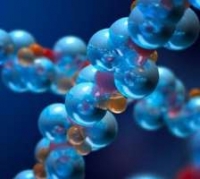From green to pink hydrogen, we reveal the rainbow of hydrogen colours and the different types of technology used to produce each.
But isn't hydrogen a colourless gas?
Yes, hydrogen is an invisible gas. So, somewhat confusingly and despite their colourful descriptions, there is no visible difference between the different types of hydrogen.
Why is a colourless gas given so many colourful terms?
Green hydrogen, blue hydrogen, brown hydrogen and even yellow hydrogen, turquoise hydrogen and pink hydrogen. They're essentially colour codes, or nicknames, used within the energy industry to differentiate between the types of hydrogen.
Depending on the type of production used, different colours are assigned to the hydrogen. But there is no universal naming convention and these colour definitions may change over time, and even between countries.
We're currently used to a blue flame from gas, so what colour will a hydrogen flame be?
Prototype gas hobs developed through the BEIS Hy4Heat programme have an orange flame. The project looked at introducing colours, but through clever burner design a vivid orange flame has been achieved without any additional colourants required.
The different colours of hydrogen:
Green hydrogen
In the kaleidoscope of hydrogen colours, green hydrogen is the one produced with no harmful greenhouse gas emissions. Green hydrogen is made by using clean electricity from surplus renewable energy sources, such as solar or wind power, to electrolyse water. Electrolysers use an electrochemical reaction to split water into its components of hydrogen and oxygen, emitting zero-carbon dioxide in the process.
Green hydrogen currently makes up a small percentage of the overall hydrogen, because production is expensive. Just as energy from wind power has reduced in price, green hydrogen will come down in price as it becomes more common.
Blue hydrogen
Blue hydrogen is produced mainly from natural gas, using a process called steam reforming, which brings together natural gas and heated water in the form of steam. The output is hydrogen - but also carbon dioxide as a by-product. That means carbon capture and storage (CCS) is essential to trap and store this carbon.
Blue hydrogen is sometimes described as ‘low-carbon hydrogen' as the steam reforming process doesn't actually avoid the creation of greenhouse gases.
Grey hydrogen
Currently, this is the most common form of hydrogen production. Grey hydrogen is created from natural gas, or methane, using steam methane reformation but without capturing the greenhouse gases made in the process.
Pink hydrogen
Pink hydrogen is generated through electrolysis powered by nuclear energy. Nuclear-produced hydrogen can also be referred to as purple hydrogen or red hydrogen.
In addition, the very high temperatures from nuclear reactors could be used in other hydrogen productions by producing steam for more efficient electrolysis or fossil gas-based steam methane reforming.
Turquoise hydrogen
This is a relatively new entry in the hydrogen colour charts and production is moving rapidly from the lab to small scale installations.
Turquoise hydrogen is made using a process called methane pyrolysis to produce hydrogen and solid carbon. In the future, turquoise hydrogen may be valued as a low-emission hydrogen, dependent on the thermal process being powered with renewable energy and the carbon being permanently stored or used.
Black and brown hydrogen
Using black coal or lignite (brown coal) in the hydrogen-making process, these black and brown hydrogen are the absolute opposite of green hydrogen in the hydrogen spectrum and the most environmentally damaging.
Just to confuse things, any hydrogen made from fossil fuels through the process of ‘gasification' is sometimes called black or brown hydrogen interchangeably.
Japan and Australia announced a new brown coal-to-hydrogen project recently. This project will use brown coal in Australia to produce liquefied hydrogen, which will then be shipped to Japan for low-emission use.
White hydrogen
White hydrogen is a naturally-occurring geological hydrogen found in underground deposits and created through fracking. There are no strategies to exploit this hydrogen at present.
Yellow hydrogen
Yellow hydrogen is a relatively new phrase for hydrogen made through electrolysis using solar power.
The future of hydrogen as energy
Projects looking into the possibilities of using hydrogen as an energy source are currently underway in various parts of the world.
In the UK, FutureGrid is trialling hydrogen mixes in off-grid gas pipelines, and Project Union is exploring the development of a hydrogen ‘backbone' joining together industrial clusters around the country.
Similarly the HyGrid Project, one of the first and largest clean hydrogen projects in the US, is expected to heat approximately 800 homes by blending green hydrogen into the existing distribution system.
To meet net zero in a timely, fair and just way we will need to explore a range of solutions. Scaling up and selecting from the clean hydrogen palette has the potential to support decarbonisation of homes, transport, industry and power. National Grid is investigating and enabling a variety of complementary technologies to provide clean, affordable, reliable and resilient energy for consumers.
In the future, some hydrogen colours may fade in importance and others burn brighter. What's certain is that the hydrogen rainbow will play a significant role in reaching net zero, as we reduce our historical reliance on fossil fuels and look to green alternatives to power our homes, businesses and transport.





